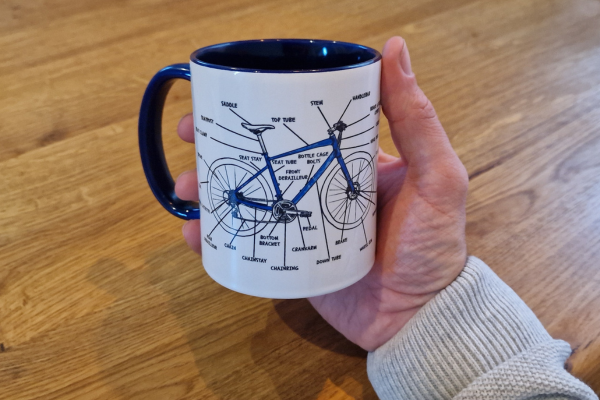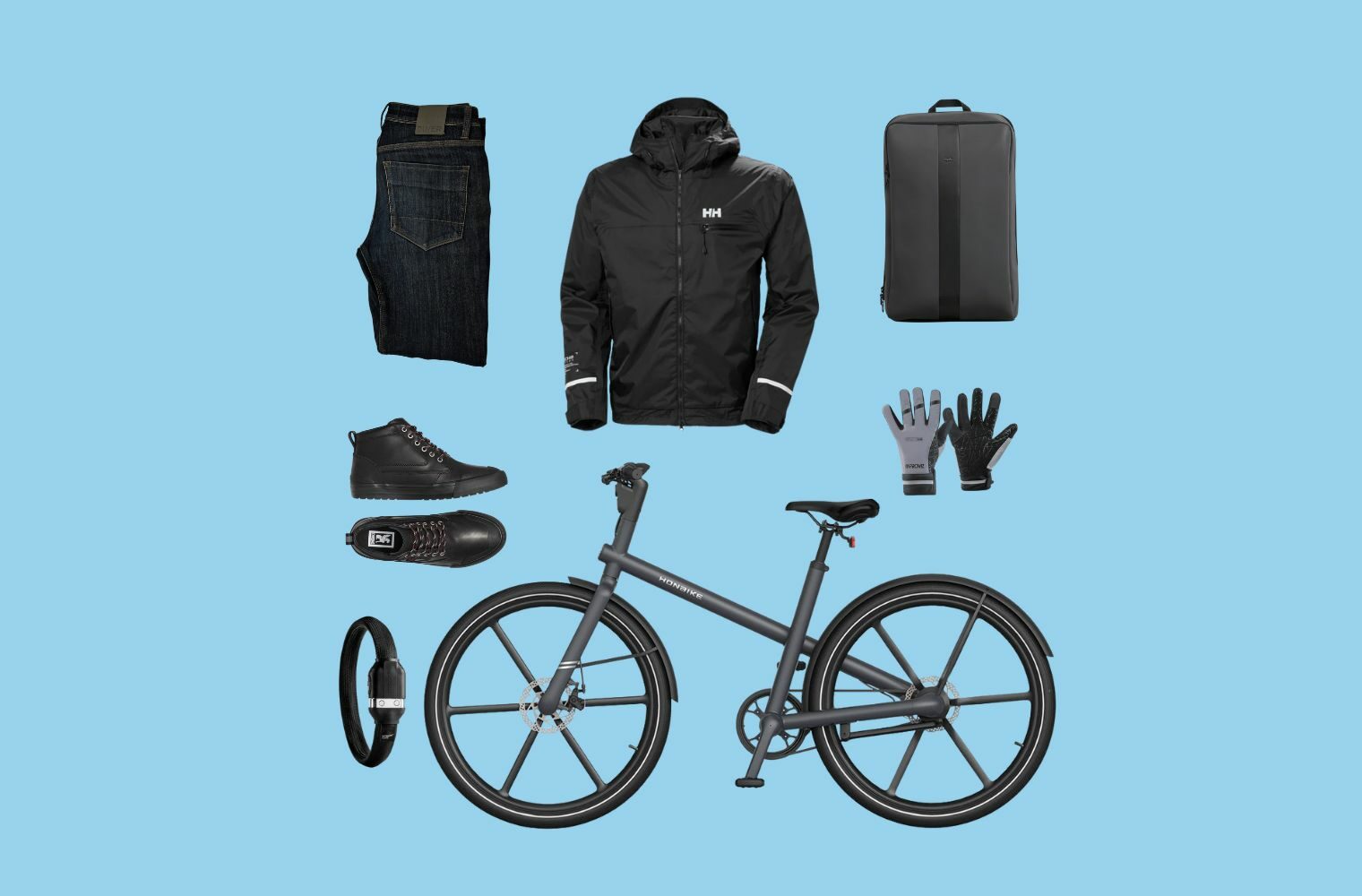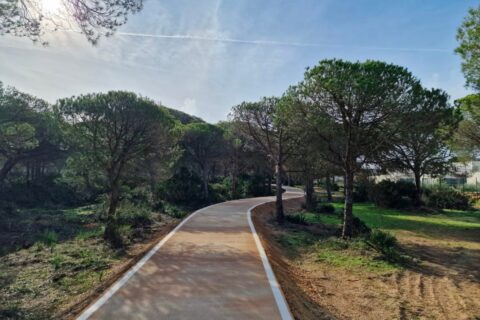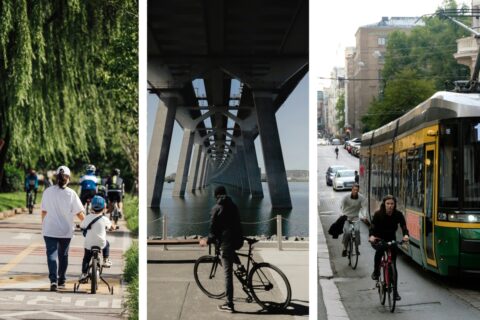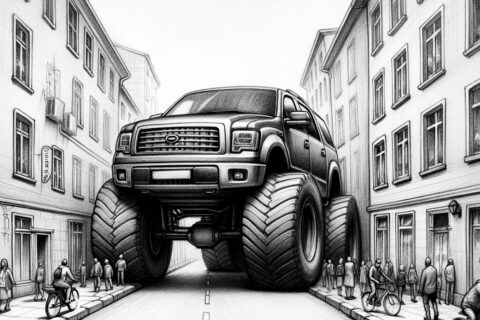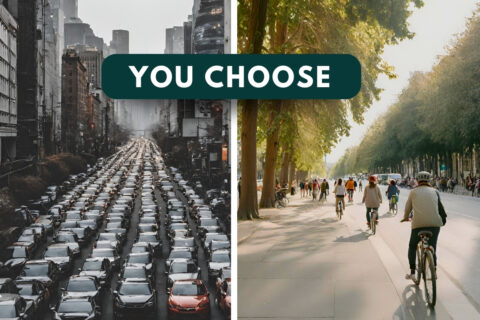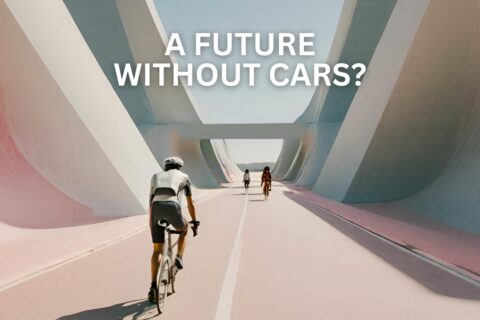This post may contain affiliate links, which help to keep Discerning Cyclist rolling. Learn more.
As the need for sustainable transportation continues to grow, cities worldwide face the challenge of creating bicycle-friendly environments. San Francisco is one such city with its hilly terrain and bustling streets.
When we think of bicycle-friendly cities, we don’t normally think of the US. However, San Francisco is one American city that is making a strong case for itself. With over 200 miles of bike lanes and paths and the highest percentage of bicycle commuters in the US, San Francisco is considered one of the most bike-friendly cities in the world.
Biking in San Francisco
In this case study, we’ll explore the bicycle usage, cycling infrastructure, investment, safety concerns, and overall bicycle-friendliness of San Francisco. Using these measures, we can determine whether the city truly embraces cycling as a viable mode of transportation.
San Francisco: A City on Two Wheels?
San Francisco, famously known for its iconic Golden Gate Bridge, cable cars, and steep hills, may not initially come to mind as a cyclist’s haven. In fact, when we think of it, if anything, we’re probably more likely to think of downtown traffic and congestion when it comes to transport.
However, the city has made significant strides to promote cycling and has witnessed a growing number of residents hopping on their bikes for their daily commute or leisurely rides. Between 2018 and 2019, the city saw a 3.1% increase in the number of passing bicycles in the city.
There was also a significant 14% increase in the number of cyclists during AM and PM rush hours, suggesting that cycling isn’t just increasing recreationally but is becoming popular with commuters specifically.
Furthermore, the Office of Economic and Workforce Development has launched several programs to encourage residents to cycle more often. These include the Bike Commute Challenge Program, which incentivizes employers to promote cycling among their employees. The Bike Parking Grants Program helps businesses install secure bike racks onsite, and The Bicycle Friendly Business Award.


Bicycle Usage in San Francisco
San Francisco has, for the most part, seen an increase in the number of cyclists, although it’s clear that the pandemic’s effect was complex regarding cycling patterns.
There is definitely a vast improvement in infrastructure, which is largely reflected in the ridership figures below. There are also interesting trends that suggest more people are choosing to commute by bike, which is consistent with a global trend. Determining the exact number of cyclists in San Francisco is difficult, but these figures are helpful nonetheless.
- The SFMTA estimates that San Franciscans make 128,000 bicycle trips per day. – SMFTA
- While ridership numbers saw a drop post-lockdown, the numbers are once again rising as cycling habits are being established. – SMFTA
- In 2021, there were 4.7 million bikes counted traveling in the city. – SMFTA
- Ridership is significantly higher at ‘peak’ hours, suggesting that people are commuting to work by bike. (8-9 AM, 4:30-6 PM). – SMFTA
- 16% of San Franciscans are ‘frequent cyclists’ who bike two or more days a week. – SF.GOV
- In August 2019, the number of bikes in San Francisco counted (across 39 counters) was 1,146,365. (Note: this doesn’t include the whole city but is a large sample of the most popular routes.) – SFMTA
These largely positive trends are unquestionably linked to the city’s investment in cycling infrastructure.

Cycling Infrastructure in San Francisco
San Francisco has made notable progress in expanding and improving its cycling infrastructure. Let’s take a look at some key aspects:
Bike Lanes in San Francisco
- As of 2021, there were over 460 miles of designated bike-traffic spaces. This consists of a mixture of bike lanes, ‘low-stress’ streets, etc. – SF – FUNCHEAP
- The Slow Streets program created 33.8 miles of ‘low-stress’ streets in 2021; these give cyclists and pedestrians priority. – SFMTA
- As of early 2022, there were nearly 300 bike-share stations across San Francisco. – SFMTA

San Francisco Spend on Cycling
- In 2020, 1,024 new racks were added, and in 2021, 660 new racks were added. (with 2,048 and 1,320 new parking spots, respectively). – SFMTA
- The city has increased its investment in cycling infrastructure by $42 million since 2010. – SFMTA
- Despite the big promises, less than 1% of the MTA budget has been spent on cycling and cycling projects. – SFBIKE

Cycling Rules in San Francisco
San Francisco enforces various cycling rules to ensure the safety of all road users. Alongside any federal laws, some key rules specific to the city include:
- Cyclists must adhere to traffic laws, including stopping at red lights and stop signs.
- Helmet use is mandatory for riders under the age of 18.
- Bicycles should have front and rear lights during nighttime
- Cyclists aged 13 and over are prohibited from riding on the sidewalk.
- It’s forbidden to obstruct a bicycle path (as it is to obstruct a road).
- No cyclist can wear earplugs or headphones that cover both ears.
- Pedestrians have the right of way.

Is San Francisco Investing in Urban Mobility?
San Francisco’s commitment to urban mobility extends beyond cycling infrastructure. The city has invested in various initiatives aimed at promoting sustainable transportation options.
- The expansion of public transportation and the introduction of electric scooters provide alternative options for commuters.
- The introduction of the ‘Active Communities Plan,’ which adopts active mobility as well as micro-mobility options. This isn’t just bicycles but also includes e-scooters. – SPUR
- Ride-sharing companies have been actively involved in micro-mobility, suggesting that there may be a transition from carpooling to personal yet more sustainable forms of transport. (LYFT) – SFCTA
These efforts indicate that San Francisco is actively working towards a more sustainable and interconnected transportation network and that urban mobility is indeed a priority for the city.

Is Cycling in San Francisco Safe?
Safety is of the utmost importance for any bicycle-friendly city. While San Francisco has made strides in improving cyclists’ safety, challenges remain.
One of the ways in which the city is making cycling safer is through education. The SFMTA offers free urban cycling classes to teach cyclists how to be comfortable cycling through the city. This helps cyclists to understand how to behave, especially in the context of traffic. Educational programs like this are a great way to make cycling safer.
As with any city, there are relative risks when it comes to cycling. Following the local laws and regulations, respecting other road/cycle lane users, and wearing adequate protection all go without saying.
Cycling Accidents in San Francisco
Even though cycling in San Francisco is safer than in many other cities, it’s still got a long way to go.
- There were 377 reported bicycle accidents in the city in 2022, resulting in two fatalities and 375 reported injuries. – RMD LAW
- Nearly 61% of reported injuries on bikes occurred in intersections. – RMD LAW
- San Francisco’s Vision Zero policy aims to eliminate traffic fatalities by 2024, prioritizing pedestrian and cyclist safety. This follows approaches taken in other cities, such as Oslo.

Bicycle Theft in San Francisco
Bicycle theft is a concern in many cities, and San Francisco is no exception. However, community engagement and proactive measures have helped address this issue:
- San Francisco SAFE offers workshops and resources on bike theft prevention, helping cyclists to keep their bikes from being stolen. – SFSAFE
- There’s been an increase in the number of neighborhood watch groups.
- A bicycle is stolen every 3 hours in the USA. – ABC
- In 2012, there were estimated to be more than 4,000 attempts (successful or unsuccessful) to steal a bike in the city.
Unfortunately, we couldn’t find any more recent statistics on bike theft in the city, but measures are being taken against it.

Is San Francisco Bicycle-Friendly?
All things considered, San Francisco is definitely a bicycle-friendly city, especially compared to other cities in America. Its iconic hills and scenic routes may not be the easiest to navigate on two wheels, but the city is doing what it can for cyclists despite the challenging topography.
The city is continuing to expand its impressive cycle network and taking steps to reduce the number of cars. Events such as the ‘Sunday Streets’ routinely give people a taste of a car-free city, allowing cyclists and pedestrians to take over roads for the day.
The Bay Area also has an extensive bike-sharing network known as ‘Bay Wheels (amongst others). It’s proven to be largely successful, albeit fairly expensive to the end user. That being said, that’s in accordance with the rest of the city.
Evaluating the bicycle-friendliness of a city is complex, and while San Francisco has made notable progress in promoting cycling and improving infrastructure, challenges in safety remain. However, measures are being taken to ensure that it continues to become increasingly bike-friendly in the future.
A San Francisco Cycling Revolution?
Despite the challenges, San Francisco is witnessing a cycling revolution. The increasing number of residents choosing bikes as their preferred mode of transportation, coupled with the city’s commitment to investing in cycling infrastructure, paints an optimistic picture for its future.
By prioritizing sustainable transportation options, engaging community participation, and addressing safety concerns, San Francisco can potentially become a model for bicycle-friendly cities globally.
While it still faces issues (one of them being a notable lack of a Bicycle Mayor!), it’s tackling them head-on. San Francisco has a lot to learn from the European heavyweights, but it’s also got a lot to teach when it comes to becoming a bicycle-friendly city against the odds.



